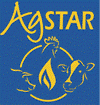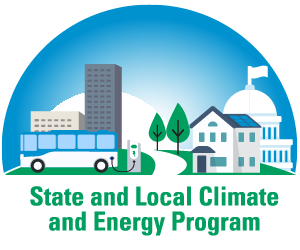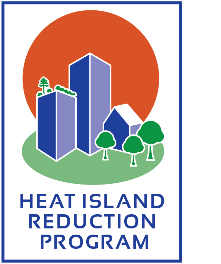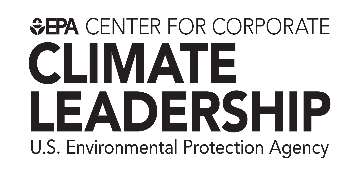Clean Energy Programs
EPA’s renewable energy and energy efficiency programs are designed to help energy consumers in all sectors, state policy makers, and energy providers by providing objective information, creating networks between the public and private sector and providing technical assistance. EPA also offers recognition to leading organizations that adopt energy efficiency and renewable energy policies and practices.
- Renewable energy programs
- Energy efficiency programs
- State, local and tribal climate and energy programs
- Corporate recognition programs
- Waste programs
- Transportation programs
Learn more about the legacy and impacts of climate partnership programs at EPA: Celebrating 30 Years of Climate Partnerships.
Renewable energy programs
Work with industry and other key groups to encourage efficient, clean technologies such as combined heat and power and green power from renewable resources.

AgStar promotes the use of biogas recovery systems to reduce methane emissions from livestock waste. In addition to producing biogas, anaerobic digestion systems can also help achieve other social, environmental, agricultural and economic benefits.

The Combined Heat and Power Partnership is a voluntary program seeking to reduce the environmental impact of power generation by promoting the use of CHP. The Partnership works closely with energy users, the CHP industry, state and local governments, and other clean energy stakeholders to facilitate the development of new projects and to promote their environmental and economic benefits.

The Green Power Partnership is a voluntary program that encourages organizations to buy green power as a way to reduce the environmental impacts associated with purchased electricity use. The Partnership currently has hundreds of Partner organizations voluntarily purchasing billions of kilowatt-hours of green power annually.

The Landfill Methane Outreach Program is a voluntary assistance program that helps to reduce methane emissions from landfills by encouraging the recovery and beneficial use of landfill gas as a renewable energy resource.
The RE-Powering America’s Land Initiative encourages renewable energy development on current and formerly contaminated lands, landfills, and mine sites when it is aligned with the community’s vision for the site. This initiative identifies the renewable energy potential of these sites and provides resources for communities, developers, industry, state and local governments or anyone interested in reusing these sites for renewable energy development.
Energy efficiency programs

ENERGY STAR is a joint program of the EPA and the DOE. Energy efficient choices can save families about a third on their energy bill with similar savings of greenhouse gas emissions, without sacrificing features, style or comfort. ENERGY STAR helps you make the energy efficient choice. EPA’s ENERGY STAR partnership offers a proven energy management strategy that helps in measuring current energy performance, setting goals, tracking savings, and rewarding improvements.
- Energy efficient products
- Energy savings at home
- Energy efficient new homes
- Energy strategies for buildings & plants
Learn more about energy efficiency for water and wastewater utilities as well as renewable energy options for water and wastewater facilities.

WaterSense is an EPA partnership program that is working to protect the nation’s water supply by offering people simple ways to use less water with water-efficient products, new homes, and services.
State, local and tribal climate and energy programs
Work with state, local and tribal governments to identify and implement cost-effective programs that reduce greenhouse gas emissions, save energy, and improve air quality.

Many state, local and tribal governments are using clean energy policies to reduce energy consumption and greenhouse gases, improve air quality and public health, and achieve economic development goals. EPA’s State and Local Climate and Energy Program supports these climate change and clean energy efforts by providing technical assistance, analytical tools, and outreach support.

The Heat Island Reduction Program helps create cooler communities and reduce the heat island effect by sharing information about heat island impacts, mitigation benefits, and policy advancements with state and local decision-makers and program implementers, the research community, industry, and the general public.

The State and Local Energy Efficiency Action Network strives to help the nation achieve all cost-effective energy efficiency by 2020 by focusing on the assistance that states and local governments need to perform their critical role in advancing policies and practices that bring energy efficiency to scale.

EPA’s Smart Growth Program helps communities improve their development practices and get the type of development they want. The program works with local, state, and national experts to discover and encourage development strategies that protect human health and the environment, create economic opportunities, and provide attractive and affordable neighborhoods for people of all income levels.
Corporate recognition programs

The Center for Corporate Climate Leadership is a resource center for all organizations looking to expand their work in the area of greenhouse gas (GHG) measurement and management. The Center encourages organizations with emerging climate objectives to identify and achieve cost-effective GHG emission reductions, while helping more advanced organizations drive innovations in reducing their greenhouse gas impacts in their supply chains and beyond. The Center also recognizes exemplary corporate, organizational, and individual leadership in addressing climate change.
Waste programs

The Responsible Appliance Disposal (RAD) Program is a voluntary partnership program that helps protect the ozone layer and reduce emissions of greenhouse gases. RAD program partners recover ozone-depleting chemicals from old refrigerators, freezers, window air conditioners, and dehumidifiers.
Transportation programs

The SmartWay Transport Partnership is a public-private collaboration between EPA and the freight transportation industry that helps freight shippers, carriers, and logistics companies improve fuel-efficiency and save money.

Use EPA’s Green Vehicle Guide to find information on vehicles that are more efficient and less polluting. Reducing vehicle emissions and increasing your fuel economy helps the environment and your wallet.
